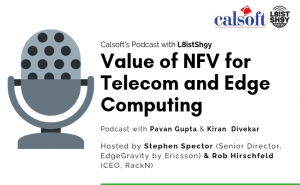
5G Transport Architecture: xHaul Transport
The telecom industry is witnessing a rapid network transformation, enabled by a wide range of pioneering technology trends. The network transformation is towards a virtualized, software defined, flexible, and open framework to support next generation 5G use cases. To effectively realize a high quality 5G user experience, future transport networks will play a crucial role to meet service requirements such as peak data rates, maximum coverage, ultra-low latency, synchronization, and security. Read the blog to explore 5G transport technologies and the key advancements in 5G transport architecture.

SD-WAN: A Game Changer for Telecom ISVs
Embracing SD-WAN can give telecom operators and service providers a clear picture of what’s happening in the telecom network.

Why SD-WAN Is Becoming an Enterprise Hot Favorite
Enterprise networks, bogged down by traditional architectures, are struggling to keep up with the surge in the modern cloud-native applications and advancing technologies. Traditional architectures are highly…

Analysis: How are Faster Networks Advancing the New-Age Datacenters
Providing lower latency up to 10 microseconds is a new challenge for operators to enable new technologies in the market. For this to happen, data center need to complement the higher broadband network. It forms the base digital innovation to happen in future.

OpenStack and Ceph for Distributed Hyperconverged Edge Deployments
Red Hat team came with an innovative hyperconvergence of OpenStack projects along with Ceph software-defined storage. A solution shows, it is possible to gain better control all edge nodes by reducing control planes and maintain the continuity and sustainability of 5G network along with the performance required by new age applications.

Tungsten Fabric as SDN for Akraino Based Network Edges
Integration of TF with Akraino edge stack enable enhanced features and utilizes remote compute architecture of TF. A solution can orchestrate all types of workloads like PNFs, VNFs and CNF, implement service chaining at edge sites, workload and data transfer security, automating deployment of control functions and workloads, and more.

Architecting Edge for Self-driving Cars with OpenStack and ETSI Open Source MANO
Involvement of leading open infrastructure projects such as OpenStack and OSM as MANO suggest that such solutions are possible using open-source projects with the added benefit of controlling developing infrastructure costs.

Value of NFV for Telecom and Edge Computing
L8istSh9y Podcast and Calsoft Inc. collaborated and had a discussion on the value of NFV for Telecom and Edge Computing. The guests invited were Pavan Gupta and Kiran Divekar, Software Architects, at Calsoft Inc. the podcast was hosted by Stephen Spector (Senior Director Digital Marketing, EdgeGravity by Ericsson) & Rob Hirschfeld (CEO, RackN).

Where the Cloud Native Approach is Taking NFV Architecture for 5G
This blog explains where cloud-native approach in NFV been this year and where it’s headed.

DPDK in 3 Minutes or Less…
DPDK (Data Plane Development Kit) came along. It said, “from today on wards there is going to be just one agency, itself, following just one rule book, a dpdk library”, irrespective of what the requestor’s end goal is. All packets, needing network functionality processing (again, it means routing, switching, firewall allow/deny etc),
